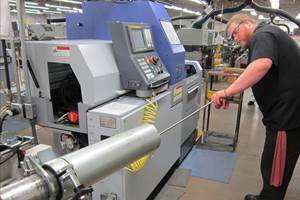Succession planning is planning for the future success of your business. It is a deliberate, ongoing process of selecting and preparing the right people to assume leadership positions at all levels of your company. However, some of even the most prosperous and forward-thinking organizations have not made succession planning a priority. Why is that? The reasons are many, but I would offer that most business owners and leaders simply don’t know where to start.
This article provides a starting line for those of you who haven’t begun the process. For those of you who have, this article will help you gauge your progress.
1. Now and Later Assessment – 15 minutes
Purpose: This exercise forces you to think about the knowledge, skills, abilities, values and personality traits that are required for success in your role, now and later. Once you understand how to quantify the kind of leadership that’s required, it’s easier to set about the task of finding or developing talent for the future.
Instructions: Set the timer on your cell phone for 15 minutes, open a Word document and type your answer to the following two prompts. Don’t overanalyze. Just think for a moment or two and start typing.
• Describe what success looks like in your present role. What does someone have to know and be able to do in order to succeed to the highest standard?
• Fast forward 5 years: Does success in your role look the same? If not, what’s different? If you can’t confidently predict what will be different, why is that?
Next steps: Ask each key leader in your company to complete the Now & Later Assessment and discuss at your next management meeting. Were there any common themes? Was this exercise easy or hard? Why? What was the mix of descriptors–behavioral/personality, explicit knowledge/skills, performance outputs, values or intellectual capabilities? What does your team need to do as a result of this exercise?
2. 9-Box Exercise – 15 minutes
Purpose: This exercise requires that you evaluate your current talent according to actual performance and perceived leadership potential.
Instructions: Take a piece of paper and draw an X and Y axis. Label the X axis “Performance” and the Y axis “Potential.” Draw two more vertical lines and two more horizontal lines to create a grid of nine boxes like the diagram below.
Assess your talent pipeline by writing down people’s names according to your subjective assessment of their current performance and leadership potential. People in Box 1 are Low Performers with Low Potential. People in Box 9 are High Performers with High Potential.
Next steps: Reflect on the results. Was this difficult to do or easy? Why? Any surprises? Do you think the individuals you ranked would assess themselves close to the way you did? What’s the implication of that? Do these individuals know specifically how to “move up and over” to another box? Why or why not? Are you formally evaluating and coaching on relevant leadership competencies? If yes, are they the right ones? If no, what’s the risk?
3. Urgent: Important Matrix—15 minutes
Purpose: This activity causes you to prioritize and rank the organizational task of succession planning against all of the other business initiatives that you are committed to. It should help you quantify the business imperative for investing time, energy and resources into succession planning.
Instructions: List the top five priorities or initiatives for your company this year. Then give each one an Urgency score and an Importance score from 1 – 10, with 1 being least and 10 being most. Multiply the factors together to get a score for each item you listed.
If you ranked “open a new production facility” as a 3 on Urgency and a 10 on Importance, the score for that item would be 30. Now add “succession planning” to the list. How does that rank?
Next steps: Consider asking your executive team or board of directors to do this activity individually, and then share responses in a meeting. How similar were everyone’s lists of priorities? How about the rankings? Given everything on the organization’s plate, is it realistic to think succession planning will get the necessary attention? Whose responsibility is it? What’s at risk if a deliberate, systematic approach isn’t taken to selecting and preparing the right people to assume leadership positions at all levels of your company?
Succession planning requires reflection, clarification, communication and deliberate planning. It should not be a one-and-done event. It requires a balance of short-term and long-term thinking, which is why the activities in this article are so important. They force you to think. In succession planning, as with any worthwhile pursuit, knowing where you are starting from is just as important as knowing where you want to end up. The first step is the hardest, but take it. The future success of your company—and quite possibly your personal or family legacy—depends on it.
Visit ADVISA’s website here.
— Precision Machined Products Association





















